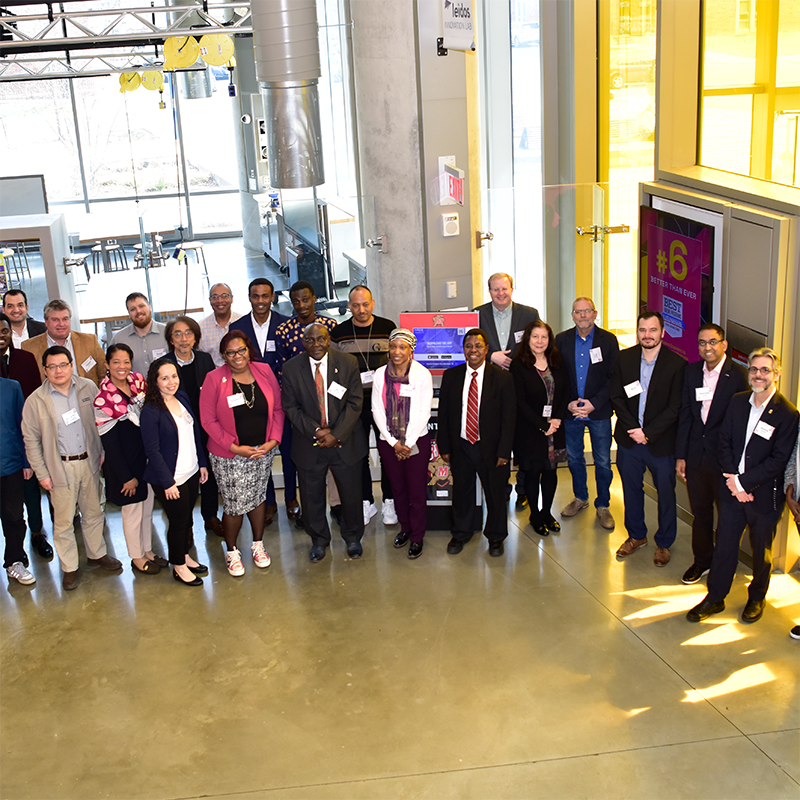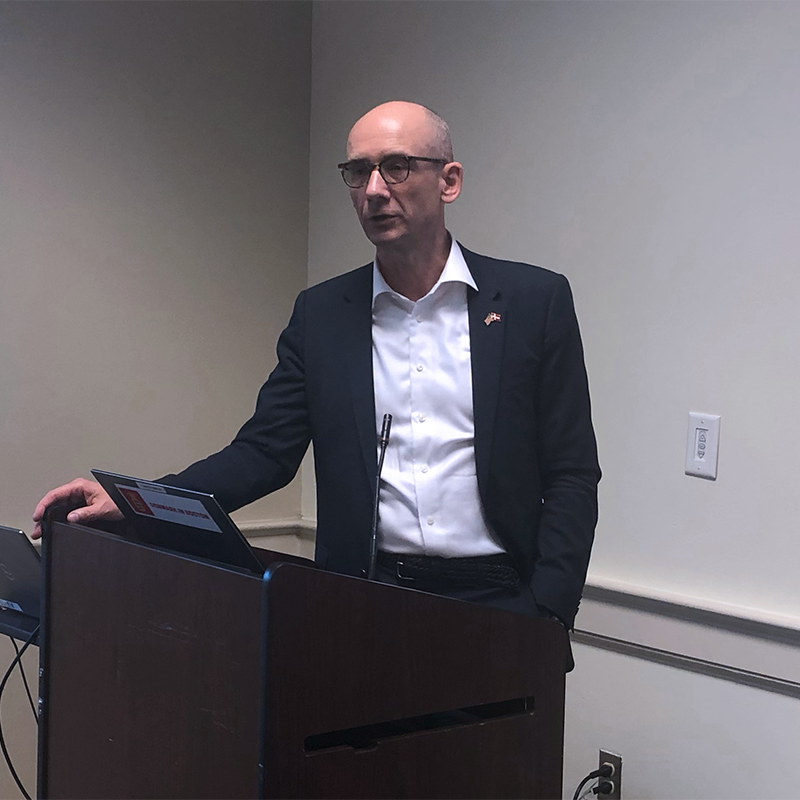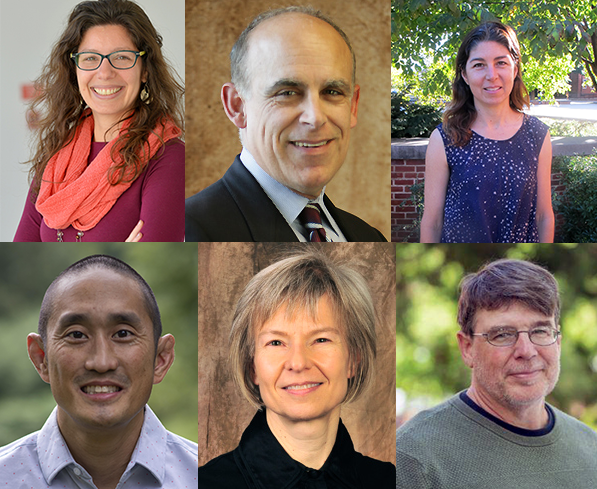News Story
Pounding the Pavement to Reduce Greenhouse Gas Emissions
As climatologists paint a grim picture of the potential impacts global warming could have across the world, both politicians and scientists face a unique challenge that is far easier to declare than it is to achieve: they must work together – and across national boundaries – to reduce greenhouse gas emissions.
While much of the dialogue surrounding greenhouse gas reduction centers on hybrid and electronic vehicles, Department of Civil and Environmental Engineering (CEE) researchers have teamed up with Chamberlain Contractors, Inc. and Global Resource Recyclers, Inc., to refocus attention not to the vehicles themselves, but to the roads on which they travel.
The construction and maintenance of paved roadways is a carbon-intensive process. Nearly 17 million metric tons of greenhouse gas is emitted from pavement-related activities, making it the second largest construction-related emissions contributor after residential and commercial buildings. In the United States alone, the “pavement network” comprises up to 45 percent of land cover in urban regions, and the majority of this is surfaced with what is known as hot mix asphalt (HMA).
Put simply, there are two types of hard-surfaced pavement: rigid and flexible. A rigid pavement structure is composed of a Portland cement concrete (PCC) surface slab and underlying base and sub-base layers; whereas, a flexible pavement is constructed with a bituminous – or asphalt – bound surface over one or more unbound base courses. As it turns out, HMA is the most common flexible pavement type in the United States, and it consists of a mixture of aggregate and liquid asphalt cement, which are heated and mixed at a temperature of 300 degrees Fahrenheit or higher.
“HMA production emitted 75.4 million metric tons of greenhouse gases in 2012 alone,” said CEE Associate Professor Qingbin Cui. Cui, CEE Professor and Chair Chuck Schwartz, and Ph.D. student Xiaoyu Liu published their findings in a recent International Journal of Pavement Engineering article, in which they revealed that the number of metric tons of greenhouse gases produced by HMA is expected to rise at an annual rate of 1.7 percent until 2020.
As such, Cui and his team of researchers recognize that growing attention paid to greenhouse gas emissions has heightened interest in the adoption of low-carbon techniques in pavement construction.
One of these techniques is known as foam stabilized base (FSB), which is manufactured from reclaimed asphalt pavement (RAP) and/or recycled concrete to achieve similar performance measurements when compared with HMA. Unlike HMA, FSB requires only a small amount of hot bitumen oil, water, and, occasionally, Portland cement.
To put into perspective what this means, Cui explained that the construction materials selected during pavement designs account for approximately 80 percent of the total emissions from a typical project. Additionally, the pavement design impacts the construction process, the usage of equipment, and the upstream material production.
“For example, FSB eliminates the need to quarry and transport newly mined materials and reduces the asphalt content by 60 percent when compared with hot mix asphalt,” Cui said.
“In today’s society, when we’re having to think smarter and do things more efficiently – and at a lower price-point – incorporating foam asphalt base into the mix design matrix is an important component to both reduce one’s carbon footprint and to lower the cost for construction or reconstruction of a road or parking lot, or whatever the case might be,” said Harold Green, founder and chief executive officer of Chamberlain Contractors, Inc., in Laurel, Md. Green has helped Cui and his team champion an initiative to not only promote the use of FSB in place of HMA, but also shed new light on the potential for carbon trading to help businesses – and the planet.
“We’re working to perfect a methodology that will basically allow us to document the quantities of FSB that we’re applying and then submit that to the Verified Carbon Standard so that we can capture those carbon emission credits and sell those credits online,” Green said. “If you’re Mr. Smith with ABC company and you have a section of road in Virginia that you’re looking to do, and you’ve submitted the bid or you want to submit a bid using an alternate with FSB, we will help you develop the alternate mix design, we will submit all the documentation that’s necessary and, if you subsequently get the work, we will actually mobilize a plant to your site where we will make the materials for you. While we provide the engineering support on the front end, we look at the value on the back end to quantify those carbon emission credits, submit them to the Verified Carbon Standard and sell those emission credits here in the states or around the world.”
Such an innovative business model requires cutting-edge tools; and, that is where additional CEE researchers step in.
Ph.D. student David Choy has long worked with Cui, Green, and the research team to develop a state-of-the-art mobile app that would allow a contractor or developer to estimate not only the potential reduction of carbon dioxide emissions, but also the likely payback.
This tool is critical for two reasons. On the smaller scale, it allows developers to see upfront the potential to reduce their carbon footprint before they undertake a project. From the 30,000-foot level, the app helps illustrate that greenhouse gas reduction and cost savings can, in fact, go hand-in-hand.
When putting aside the engineer’s hat, this is the key challenge Green and his team members are eager to tackle. After all, FSB has been used for decades in areas such as Asia, Europe, and South America, but it has not yet been widely embraced here in the United States.
“The simple reason is that there is no inertia to change,” Green explained. “The senior project engineers who are currently the decision-makers are typically near the end of their careers and they have long dealt with a product and process that has served them well, and that is hot mix asphalt with a granular aggregate base. Even more, someone with the county or state is likely to say that he or she needs to write their own specifications and quality assurance procedures for FSB, even though we already have so many international standards. That can be a laborious process, so it creates a hesitancy to adopt FSB – even when FSB is both better for the environment and cost efficient.”
But, change is on the horizon – including right here in Maryland. In fact, the University of Maryland has looked into new ways to use FSB in its goal of becoming carbon neutral.
“This project is just one of the countless examples of ways in which civil engineers – including those here at the university – are working to inspire real change to benefit our planet for generations to come,” Schwartz said. “So often, we hear in the news about how the cars we drive and the gasoline we purchase can have an adverse impact on our environment; but, we see now that there are many other areas in which engineers can find solutions – and pavement engineers are working to do just that.”
Published November 2, 2016









